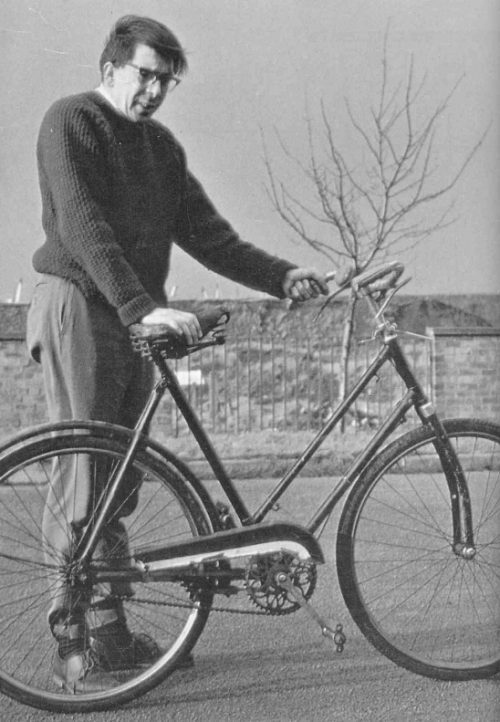 In 1970, David E. H. Jones investigated the physics of the bicycle, crafting a number of different bicycles to attempt to develop both the most unstable and the most stable bicycle. He was successful in both regards and further found the general principles that keep a bicycles upright. Contrary to the popular concept of the "gyroscopic effect" the principles of stability rely on the angle, rake and position of the front wheel.
In 1970, David E. H. Jones investigated the physics of the bicycle, crafting a number of different bicycles to attempt to develop both the most unstable and the most stable bicycle. He was successful in both regards and further found the general principles that keep a bicycles upright. Contrary to the popular concept of the "gyroscopic effect" the principles of stability rely on the angle, rake and position of the front wheel.
Jones discovered that a bicycle that has had its front forks reversed so that the rake (curve of the fork) points inward ends up being a very stable bike that will self-correct when pushed and released riderless.
As it turns out this bike is too stable to be a good bicycle. Most modern bikes are built on the edge of instability to provide greater responsiveness.
I'm sure this isn't the end of the story. There have been more papers since, but they are locked away in these damned science journal sites. His experiments and calculations have contributed to bicycle engineering all the same and are known as Jones' stability criterion.
I love the last line of Jones' paper:
It seems a lot of tortuous effort to produce in the end a machine of absolutely no utility whatsoever, but that sets me firmly in the mainstream of modern technology. At least I will have no intention of foisting the product onto a long-suffering public in the name of progress.
Was he thinking of the SUV?

Comments
Darren_S
Who did it reversed?
Sat, 03/14/2009 - 06:52I am racking my brain trying to remember who set hour records with their forks reversed. Moser?